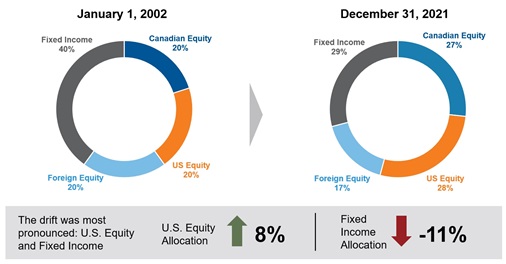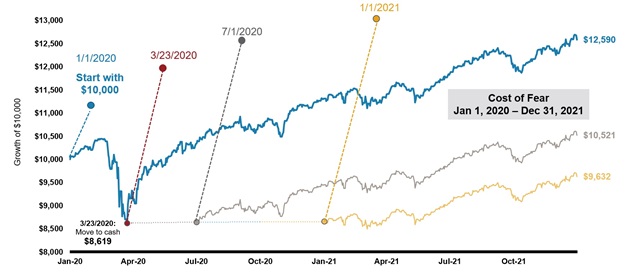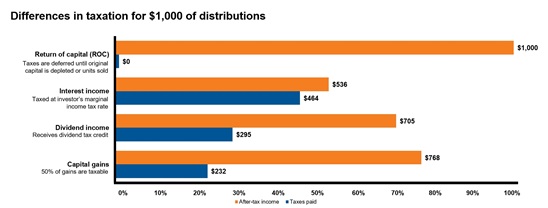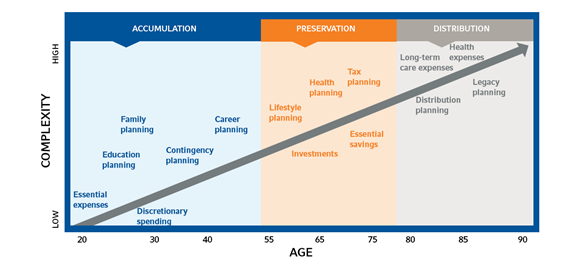How advisors deliver value in challenging times
We believe advisors are never more valuable than in times of significant change. And 2021 was a year in which a lot changed.
There was the Great Resignation – in which many people left their jobs or moved on to other pursuits. There was the Great Migration out of cities and into smaller towns or rural areas. There was the rise of the hybrid office. Inflation, which had been relatively tame for years, soared. Tom Brady changed teams (but still won the Super Bowl).
And as the pandemic waned, people began thinking about what was next for them and their families. For many, the future may not be the same as they had envisioned before the COVID-19 outbreak. And that means their investment portfolio may need to adapt to the new outlook they have. We believe advisors provided substantial value in 2021 helping investors prepare for their post-pandemic lives.
Every year since 2014 we have created an annual report that holistically analyzes the real value advisors deliver through the vital services they provide their clients. This year we also considered the value inherent in helping guide their clients through the upheaval the pandemic wrought on markets, lifestyles and future plans.
That’s why we updated the formula we use to articulate the value of an advisor’s services. We want to recognize that many investors may have new priorities and an evolving outlook, that younger generations are entering the market, and that both spouses and often the children as well are involved in determining financial goals.
Our equation remains simple and easy to follow.
Value of an Advisor = A+B+C+T
A is for Active rebalancing of investment portfolios
Portfolio rebalancing may go on the back burner when financial markets are rising calmly as they did for most of 2021. But that could be a mistake. Rebalancing works to keep the mix of assets in a portfolio in line with the investor’s risk-and-return profile no matter what happens in the markets.
Markets don’t rise evenly. Some sectors can go up while others go down, some stocks can go up much faster than others (think Amazon and other tech giants during the pandemic), and so on. Generally, when equity markets rise, fixed income markets fall. All of that movement can affect a portfolio’s asset allocation. And that in turn can affect future returns and risks.
Historically, rebalancing to fixed weights causes one to sell equities and buy bonds. For this reason, a portfolio that has not been rebalanced since 2002 would look very different today than it did back then. For example, a hypothetical balanced portfolio of 60% equities and 40% fixed income purchased in January 2002 would now have a significant overweight in equities at 72% and an underweight in fixed income at 29% (percentages have been rounded up). More importantly, the weighting of U.S. equity would have risen to 28% of the portfolio from 20%. Being so top-heavy in one region can be risky if U.S. stocks were to suddenly plunge. Having to explain to a client why they now have a more aggressive allocation instead of the balanced one they thought they had, is not a conversation most advisors would relish having.
Click image to enlarge

Source: Russell Investments. Analysis based on data from 1/1/2002 - 12/31/2021. Initial asset allocation: 20% S&P/TSX Composite Index (Canadian equity), 20% S&P 500 Index (US Equity), 20% MSCI EAFE Index (Foreign Equity), and 40% FTSE Canada Universe Bond Index (Canadian Fixed Income). Indexes are unmanaged and cannot be invested in directly. Returns represent past performance, are not a guarantee of future performance, and are not indicative of any specific investment.
B is for Behavioral coaching
Behavioral mistakes cost real money. When it comes to delivering value, avoiding behavioral mistakes may be the most significant contributor to total value.Left to their own devices, many investors buy high and sell low. Helping your clients avoid pulling out of markets at the wrong time and sticking to their long-term plan is one way advisors provide substantial value.
The last few years are a perfect example. An investor who fled for the exits in mid-March 2020 when the pandemic emerged (as many did), could have missed out on some significant gains, depending on whether and when they re-invested in the market.
The chart below shows the difficulty of finding a new point of entry once an investor pulls out of the markets. Remaining invested for the entire two years of the pandemic would have seen a $10,000 investment on Jan. 1, 2020 rise to $12,590 by the end of 2021. But an investor who moved to cash in March 2020 and then returned to the market a few months later at the end of the second quarter, would only have $10,521 by the end of 2021. Meanwhile, an investor who moved to cash in March 2020 and stayed in cash until January 2021, would have only $9,632 at the end of 2021.
This is where we believe an advisor can be a valuable guide. Keeping their clients focused on the long-term rather than falling prey to emotions when markets get volatile can potentially bring better returns.
Click image to enlarge
Fear impacts opportunity

Source: Morningstar Direct. As of December 31, 2021. In CAD. Balanced Portfolio: 60% MSCI World Index & 40% Bloomberg Canada Aggregate Bond Index. Cash: S&P Canada Treasury Bill Index. Index returns represent past performance, are not a guarantee of future performance, and are not indicative of any specific investment. Indexes are unmanaged and cannot be invested in directly. The performance shown does not include fees and other costs that would have reduced returns.
Pulling out of the market when it is falling can lock in losses and could lead to missing out on any subsequent rally. Without a crystal ball, it’s hard to time the perfect point to get back into the market.
C is for Customized experience and family wealth planning
Let’s face it, people’s lives are becoming more and more complicated, and each person has their own set of personal goals, circumstances and preferences. An advisor who has a deep understanding of an investor’s individual situation can provide significant value. The customized client experience and comprehensive wealth planning that advisors can provide may be vital to guiding entire families through their major life events and decisions.
For illustrative purposes only.
We also recognize the role of the advisor is quickly evolving and is expected to help ensure that any wealth transition is properly managed. Research suggests that 70% of investible assets will be in the hands of the next generation over the next two decades.1 A trusted advisor can ensure that everyone in the family is involved in the process and their wishes met. We believe there is value in the role an advisor plays to build financial security for entire families.
T is for tax-smart planning and investing
Nobody wants to pay more taxes than they have to.
While taxes may by complicated and confusing, they are important.
Advisors can play a crucial role helping investors reduce the tax bite on their portfolio, and to structure the income they receive from their investments to keep their tax bill at a minimum. A tax-smart advisor can help their clients understand when to channel funds to a Registered Retirement Savings Plan (RRSP) and when to a Tax-Free Savings Account (TFSA). More importantly, advisors who are mindful of taxes can help their clients determine the best way to withdraw funds from these registered plans, to potentially avoid having their Old Age Security (OAS) benefits clawed back. An advisor who helps clients continue to receive their government benefits provides significant value.
The first step to becoming a tax-aware advisor is to understand the differences in taxation on different types of investment income.
Click image to enlarge

For illustrative purposes only.
All examples shown are based on the following 2022 Ontario marginal tax rates for calculating the tax liabilities: interest income = 46.4%, Canadian eligible dividends = 29.5% and capital gains = 23.2%
A tax-smart advisor can also guide their clients on the types of investments that pay distributions as return of capital. Return of capital can allow an investor to defer the taxes on those distributions to a later time – perhaps when they are in a lower tax bracket.
There’s more. While tax-efficient investing is important during an investor’s accumulation phase to help keep more money in the portfolio to grow, it’s also important during the decumulation phase– when the investor is relying on their savings to fund their retirement lifestyle. Advisors who can help their clients reduce the tax burden at that time can potentially help them have a much better lifestyle in retirement. And we believe that holds significant value.
The bottom line
The waning of the pandemic and the new geopolitical environment could be the perfect time for advisors and their clients to work more closely. As noted earlier, our post-pandemic lifestyles, dreams, goals and finances may be vastly different from what they were before COVID-19 emerged. But one thing likely hasn’t changed: the universal desire for financial security. And that’s where a trusted advisor can truly provide value.
Advisors, we believe in your value. We see the advantages you create for your clients. We know the commitment you bring to your relationships. So as we emerge into a post-pandemic world full of unknowns, take pride. You’ve helped your clients navigate a tumultuous period and your value is clear.
To learn more about the 2022 Value of an Advisor Study, click here.
1Source: https://www.ig.ca/content/dam/investorsgroup/pdf/ig-inter-generational-wealth-transfer-client-report-en.pdf Based on data from Investor Economics 2021 Household Balance Sheet Report

